Before the Global Sumud Flotilla (GSF) and the Freedom Flotilla Coalition, did you know that there was another similar humanitarian mission that sailed to Gaza back in 2010?
The Gaza Freedom Flotilla was a small fleet of ships organised by the Free Gaza Movement and the Turkish Foundation for Human Rights and Freedoms and Humanitarian Relief (IHH). Its goal was to deliver humanitarian aid and break the Israeli blockade of the Gaza Strip. The mission comprised six ships, one of which was the MV Mavi Marmara.
Advertisement
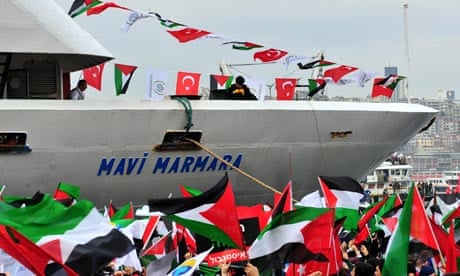 Image Credit: The Guardian
Image Credit: The Guardian
In May 2010, the Mavi Marmara, a Turkish ferry, carried much-needed aid for the Palestinian people and more than 600 activists from over 30 countries, including Malaysia.
However, in the early morning of May 31, 2010, the ferry became the scene of a deadly confrontation when Israeli forces opened fire, killing 10 activists on board.
How it all began
The MV Mavi Marmara departed from the Port of Antalya, Türkiye, on May 28, 2010, heading to a rendezvous point in international waters south of Cyprus. It was understood that the Mavi Marmara would join the other ships in the mission for two days before heading toward Gaza.
 Image Credit: Sinar Harian
Image Credit: Sinar Harian
In an interview with Sinar Harian, Dr Noorazman Mohd Samsuddin, Head of the Life Line for Gaza Mission, said that a day before the Mavi Marmara was attacked, activists on board were informed that several assets from the Zionist military’s naval fleet had been spotted heading toward them to disrupt and prevent the mission.
“The Mavi Marmara's radar showed two submarines, three warships, three helicopters, and more than 30 Zodiac boats heading toward our ship.”
Noorazman was among 12 Malaysians on board at the time. Other activists came from countries including Indonesia, Türkiye, Australia, and Sweden.
“After a prayer, Fehmi Bulent Yildirim, the head of the flotilla and President of the Insani Yardim Vakfi (IHH), gave us a briefing. He asked the volunteers: do we want to continue our journey to Gaza or turn back?"
"At the time, all the volunteers were silent, thinking about the risk of clashing with elite Israeli commandos,” Noorazman recalled.
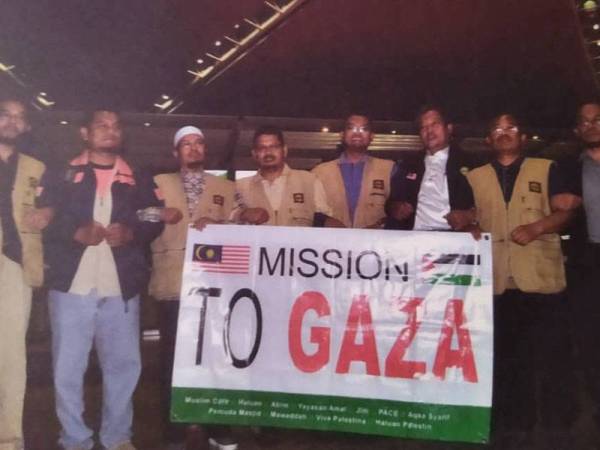 Image Credit: Sinar Harian
Image Credit: Sinar Harian
Image Credit: Sinar Harian
However, when Bulent stated that he would feel ashamed if Allah viewed him as a ‘coward’ for turning back, the volunteers unanimously decided to continue the journey.
The preparation
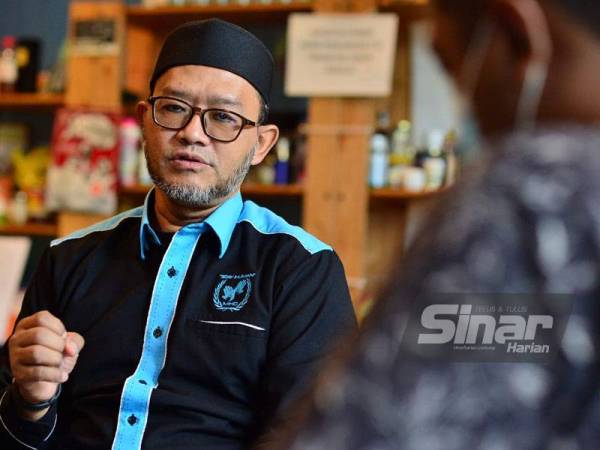 Image Credit: Sinar Harian
Image Credit: Sinar Harian
Noorazman recalled attending another meeting with members of the Malaysian and Indonesian teams to assist the crew in case of emergency.
“The ship's security chief informed us that the Mavi Marmara might face harassment from Israeli forces at midnight or early morning on May 31 as we approached Gaza,” he said.
He also described a special meeting with the medical team to prepare emergency and treatment rooms.
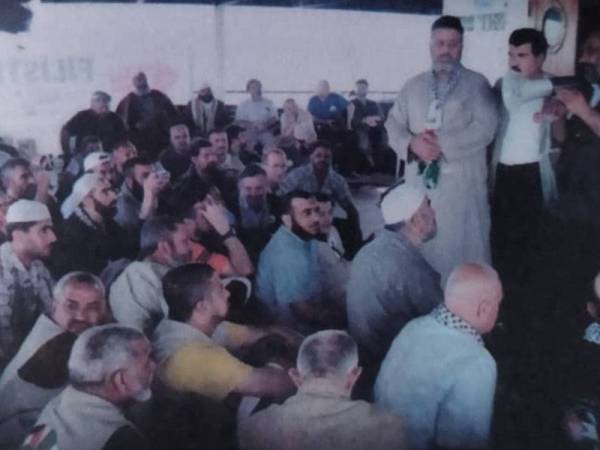 Image Credit: Sinar Harian
Image Credit: Sinar Harian
At 9 PM that day, volunteers began guarding every corner of the ship in anticipation of an attack. Noorazman and his team were assigned to guard the left side of the main deck on the third floor.
“Only women and the elderly were exempted from guard duty and were placed in cabins for safety.”
The attack
At 4 AM, as volunteers took turns praying, Noorazman saw a drone approaching the ship. At the same time, several Zodiac boats carrying 10 to 15 Israeli soldiers sped toward the Mavi Marmara.
Helicopters with snipers also began attacking. According to Noorazman, the volunteers were helpless and could only take cover behind walls as bullets rained down.
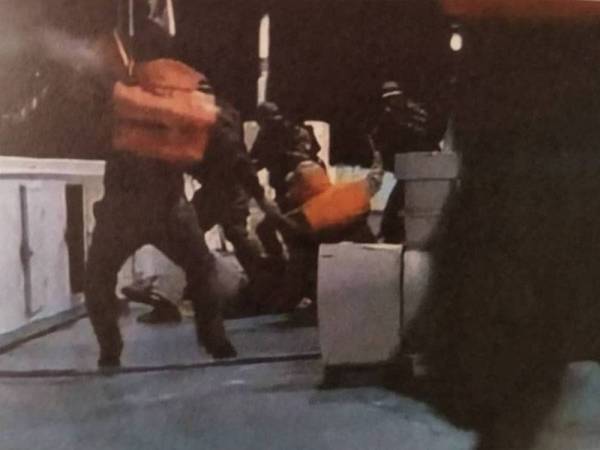 Image Credit: Sinar Harian
Image Credit: Sinar Harian
He shared, “We were shot at without warning. One Malaysian volunteer, Abdul Halim Mohamed Redzuan, was shot in the head, but thankfully it was a rubber bullet and he survived. Meanwhile, my friends and I could only find shelter as we were being shot at."
"I also remember an Indonesian volunteer, Okvianto, who was next to me. He held a water hose and sprayed water at the soldiers. Then, he was hit by a sniper’s bullet in the hand, causing severe injuries.”
Israeli soldiers initially failed to board the ship from the sea but eventually landed on the roof (fifth floor) via helicopter and took control.
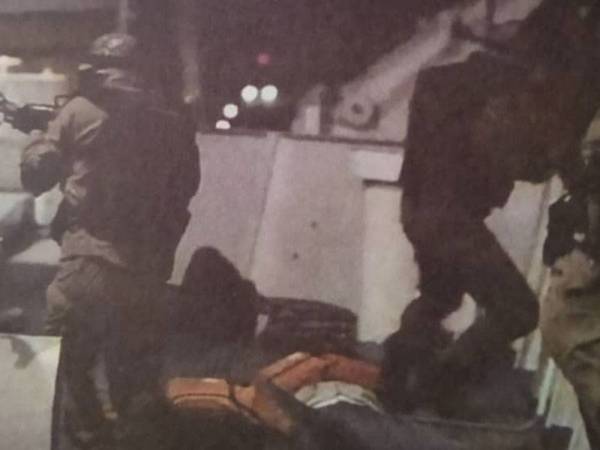 Image Credit: Sinar Harian
Image Credit: Sinar Harian
“The volunteers were forced to defend themselves and fight back against the brutal attacks. We seized their weapons and threw them into the sea."
"We also managed to capture three Israeli commandos and took them to the lower deck to protect them from friendly fire,” he added.
Noorazman said the captured soldiers were treated by onboard doctors, although one doctor objected, questioning why they should help those who had killed a fellow volunteer.
Throughout the attack, the flotilla leader repeatedly made announcements in English and Hebrew, urging Israeli soldiers to stop.
The aftermath
By 7 AM, the Mavi Marmara was captured. Nine people were killed, 23 seriously injured, and 80 others wounded.
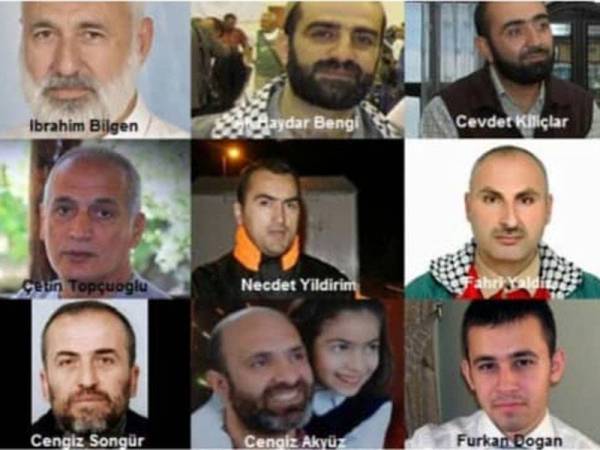 Image Credit: Sinar Harian
Image Credit: Sinar Harian
The nine killed were:
- Cengiz Akyuz, 42, Türkiye (four gunshot wounds: chest, back, hip, temple)
- Ibrahim Bilgen, 60, Türkiye (same as above)
- Cevdet Kiliclar, 38, Türkiye (gunshot wound to forehead)
- Furkan Dogan, 19, USA (five gunshot wounds: nose, back, head, leg, ankle)
- Fahri Yaldiz, 43, Türkiye (four gunshot wounds: chest, legs)
- Ali Haydar Bengi, 39, Türkiye (six gunshot wounds: chest, belly, arm, leg, hand)
- Cetin Topcuoglu, 54, Türkiye (three gunshot wounds: head, side, belly)
- Cengiz Songur, 47, Türkiye (gunshot wound to neck)
- Necdet Yildrim, 32, Türkiye (two gunshot wounds: shoulder, back)
The final casualty, Ugur Suleyman Soylemez, died in 2014 after four years in a coma.
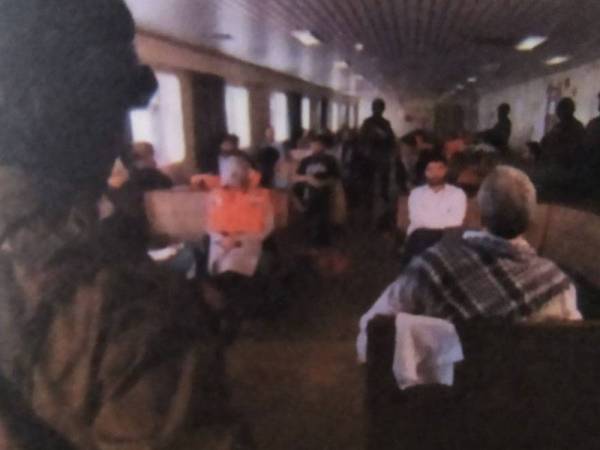 Image Credit: Sinar Harian
Image Credit: Sinar Harian
After the attack, the injured were taken to a hospital in Haifa. Others were transported to the Port of Ashdod—a 15-hour journey.
“Upon arrival, we were thoroughly searched. Some volunteers were humiliated with full-body searches and beaten. We were later taken to a prison in Be’er Sheva,” Noorazman said.
He also claimed that food provided in prison was suspected to be laced with arsenic, which was only discovered after returning to Malaysia and undergoing medical tests.
“The doctor informed us that our bodies contained arsenic. Fortunately, we were not imprisoned for long.”
Noorazman and the 12 Malaysian volunteers safely returned home on the morning of June 6, 2010, closing a harrowing chapter of captivity under Israeli forces.
Despite the traumatic incident, Noorazman remains undeterred in continuing his humanitarian efforts. In fact, he said the Mavi Marmara incident sparked a surge in Palestine-related activities, as many NGOs became motivated to carry out humanitarian missions.
Featured Image Credit: Daily Sabah, Sinar Harian




